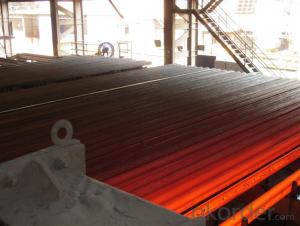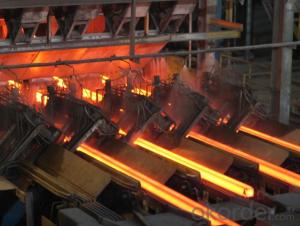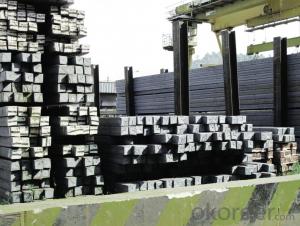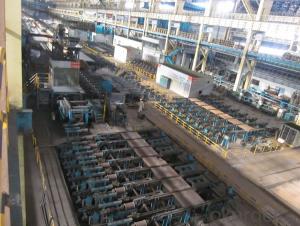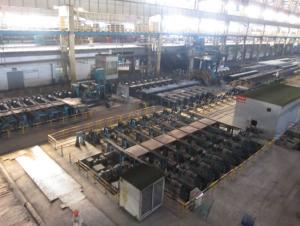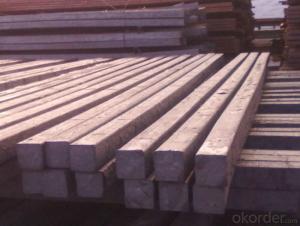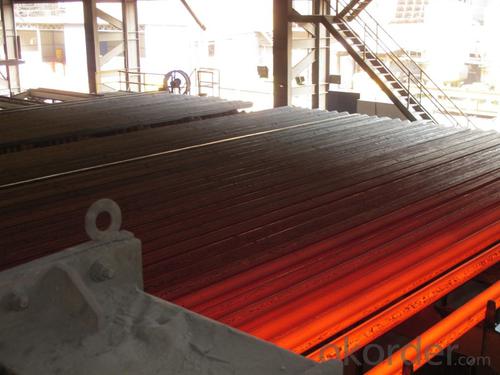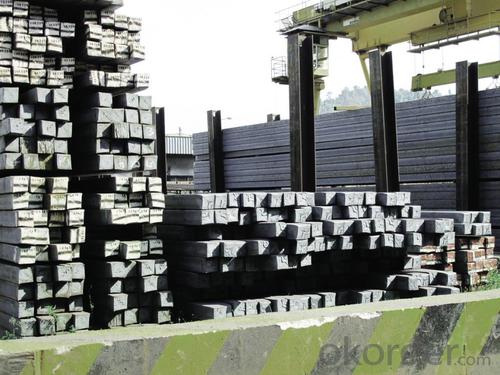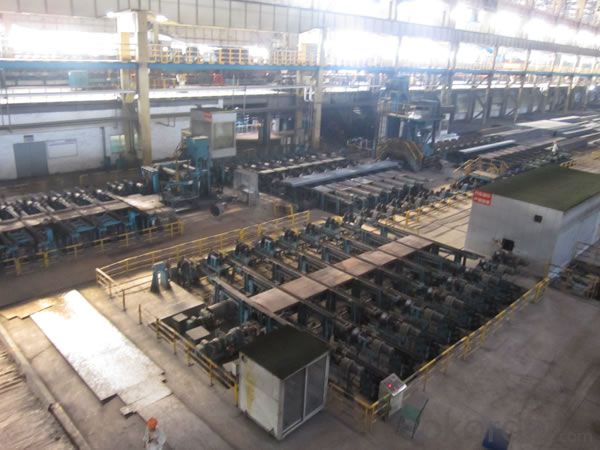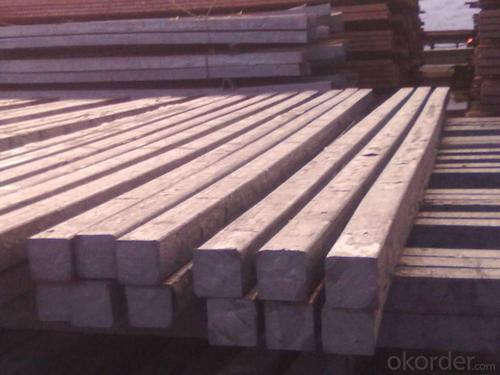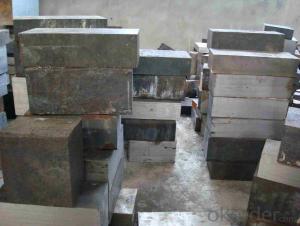Prime quality prepainted galvanized steel 665mm
- Loading Port:
- Tianjin
- Payment Terms:
- TT OR LC
- Min Order Qty:
- 100 m.t.
- Supply Capability:
- 10000 m.t./month
OKorder Service Pledge
OKorder Financial Service
You Might Also Like
Construction building material galvanized color prepainted cold
rolled steel coil
Prepainted steel sheet is coated with organic layer, which provides higher anti-corrosion property and
a longer lifespan than that of galvanized steel sheets.
The base metals for prepainted steel sheet consist of cold-rolled, HDG electro-galvanized and hot-dip
Alu-zinc coated. The finish coats of prepainted steel sheets can be classified into groups as follows:
polyester, silicon modified polyesters, polyvinylidene fluoride, high-durability polyester, etc
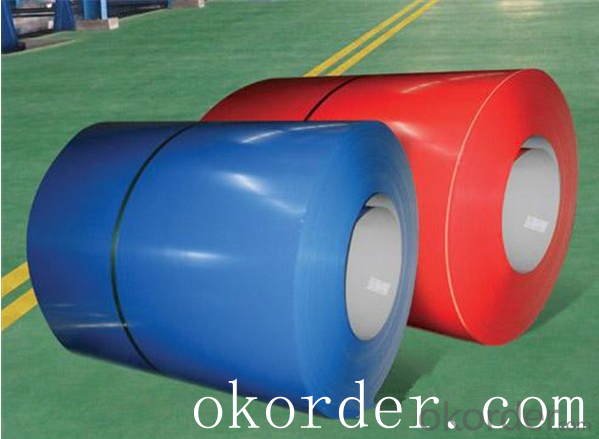
Standard and Grade :
Pre-paint galvanized steel coil | ||||
ASTM A755M-03 | EN10169:2006 | JISG 3312-2012 | ||
Commercial quality | CS | DX51D+Z | CGCC | |
Structure steel | SS GRADE 230 | S220GD+Z | CGC340 | |
SS GRADE 255 | S250GD+Z | CGC400 | ||
SS GRADE 275 | S280GD+Z | CGC440 | ||
SS GRADE 340 | S320GD+Z | CGC490 | ||
SS GRADE550 | S350GD+Z | CGC570 | ||
S550GD+Z | ||||
Application:
Outdoor | Roof, roof structure, surface sheet of balcony, frame of window, door of garage, rolled shutter door, booth, Persian blinds, cabana, etc |
Indoor | Door, isolater, frame of door, light steel structure of house, home electronic appliances, ect. |
Specifications
Commodity Name: Prepainted Galvanized Steel Coil
Standard: AISI, ASTM, DIN, GB, JIS
Grade: TDC52D+Z
Thickness 0.13-8.0mm
Width:600mm-1350mm
Zinc Coating:275g/m2
Polyester Coating Thickness:Top and Back coating thickness depend by Buyer Requirement.
Polyester Coating Type:2/2,1/2m,1/2.
Polyester Type: Polyester, silicone modified polyester, high durability polyester (HDP), polyvinylidene fluoride (PVDF)
Unit Roll Weight:5-20tons
Place of Origin Shanghai , China (Mainland)
Surface Treatment :Color Coated
Manufacture Progress:HRC-CRC-GALVANIZED-COLOR COATED
Application : Construction, electrical, transportation, steel plant, composite board plant, steel tile factory
Payment & Shipping Terms:T/T ,L/C, and FOB CHINA
Minimum Order Quantity: 25Tons
Packge Type: Moisture-proof paper inner,Steel outside,Bundle by steel rope.
Package in Container : Wood as a foot pad, wire rope reinforcement,PPGI steel coil tied together by steel rope.
- Q: How are steel billets used in the manufacturing of gears?
- Gears, which are mechanical devices that transmit power and motion, rely heavily on steel billets for their production. These billets, obtained through casting or rolling, are semi-finished steel products that serve as the foundation for gear manufacturing. To begin the process, the steel billets are heated to a specific temperature and then subjected to mechanical force, such as hammering or pressing, to shape them into the desired gear form. Once the initial shape is achieved, the billets undergo various machining operations, including milling, drilling, and grinding, to remove excess material and create precise dimensions and features. Steel billets offer numerous advantages in gear manufacturing. Their durability and strength allow them to handle heavy loads and high-speed rotations, while their excellent wear resistance ensures long-lasting performance. Additionally, steel billets can be easily machined to achieve intricate gear designs, enabling customization and optimization of gear performance. In conclusion, steel billets are indispensable in gear manufacturing as they provide the necessary strength, durability, and precision for gears to function effectively. Through forging and machining processes, these billets are transformed into gears capable of efficiently transmitting power and motion.
- Q: What are the different forging methods used for steel billets?
- There are several different forging methods commonly used for steel billets, including open die forging, closed die forging, and upset forging. Open die forging involves shaping the steel billet between flat or shaped dies, allowing for greater flexibility in forming complex shapes. Closed die forging, on the other hand, involves placing the billet between two dies that have a pre-determined shape, resulting in a more precise final product. Upset forging is a method used to increase the diameter or thickness of the billet by compressing it axially, often used to create shorter and thicker components.
- Q: What are the main factors affecting the electrical conductivity of steel billets?
- Several key factors primarily influence the electrical conductivity of steel billets. 1. Composition significantly affects the electrical conductivity of steel. The presence of alloying elements, such as carbon, manganese, silicon, and phosphorus, can alter its conductivity properties. 2. Impurities in steel, like sulfur and oxygen, can lower its electrical conductivity. These impurities create barriers to the flow of electric current within the material. 3. The grain structure of steel, influenced by factors like temperature and cooling rate during manufacturing, can impact its electrical conductivity. A fine-grained structure generally results in higher conductivity due to fewer barriers to electron flow. 4. The electrical conductivity of steel billets can be affected by the heat treatment process. Annealing or quenching, for example, can modify the material's microstructure and consequently impact its conductivity. 5. Temperature plays a significant role in the electrical conductivity of steel billets. As temperature increases, conductivity decreases due to increased thermal vibrations that hinder electron flow. 6. The surface condition of steel billets, including the presence of oxides, scale, or contaminants, can influence their electrical conductivity. A clean and smooth surface promotes better conductivity by reducing barriers to electron flow. 7. Mechanical stress or strain in steel billets can affect their electrical conductivity. Processes like rolling, forging, or bending can alter the material's crystal structure and introduce dislocations, which impact conductivity. In conclusion, the electrical conductivity of steel billets is a complex property influenced by factors such as composition, impurities, grain structure, heat treatment, temperature, surface conditions, and mechanical stress. Understanding and controlling these factors is crucial for achieving the desired electrical conductivity in steel billets for various applications.
- Q: How are steel billets used in the manufacturing of tools and equipment?
- Steel billets are used in the manufacturing of tools and equipment as they serve as the raw material for shaping and forming various metal products. These billets are heated, forged, and machined to create different components such as shafts, gears, fasteners, and cutting tools. The high strength and durability of steel make it an ideal choice for manufacturing tools and equipment that require strength, precision, and resistance to wear and tear.
- Q: What are the different types of welding processes used for joining steel billets?
- There are several different types of welding processes that can be used for joining steel billets. Each method has its own unique characteristics and advantages, depending on the specific requirements of the project. Here are some of the most commonly used welding processes for joining steel billets: 1. Shielded Metal Arc Welding (SMAW): Also known as stick welding, SMAW uses a consumable electrode coated in flux to create an arc between the electrode and the base material. This process is versatile and can be used for both thick and thin steel billets, making it widely used in various industries. 2. Gas Metal Arc Welding (GMAW): Commonly known as MIG welding, GMAW uses a continuous wire electrode and a shielding gas to protect the weld from atmospheric contamination. This process offers high productivity and is suitable for welding steel billets of various thicknesses. 3. Flux-Cored Arc Welding (FCAW): Similar to GMAW, FCAW uses a continuously fed tubular electrode filled with flux. This process is ideal for welding thicker steel billets and is often used in heavy fabrication applications. 4. Gas Tungsten Arc Welding (GTAW): Also known as TIG welding, GTAW uses a non-consumable tungsten electrode and a separate filler metal. This process produces high-quality welds and is commonly used for joining steel billets in applications that require precision and aesthetic appeal. 5. Submerged Arc Welding (SAW): SAW involves the use of a continuously fed electrode and a granular flux that covers the weld area. The process is particularly suitable for welding thick steel billets and is often used in the construction of pressure vessels and heavy machinery. 6. Laser Beam Welding (LBW): LBW utilizes a laser beam to generate heat and join the steel billets. This process offers high precision and speed, making it suitable for a wide range of applications, including automotive and aerospace industries. 7. Electron Beam Welding (EBW): EBW uses a high-velocity electron beam to melt and join the steel billets. This process provides deep penetration and precise control, making it ideal for critical applications that require high-quality welds. It is important to consider the specific requirements, thickness, and material properties of the steel billets when selecting the appropriate welding process. Consulting with a welding expert can help determine the most suitable method for a given project.
- Q: What is the role of steel billets in the automotive industry?
- Steel billets play a crucial role in the automotive industry as they are used as the primary raw material for manufacturing various components and parts of vehicles. These billets are transformed into different shapes and sizes through processes like forging, rolling, and machining to create engine parts, chassis components, axles, and other structural elements. With their strength, durability, and versatility, steel billets enable the automotive industry to produce high-quality and reliable vehicles, ensuring safety and performance for drivers and passengers.
- Q: How are steel billets used in the production of gears?
- Steel billets are used in the production of gears as the raw material from which the gears are manufactured. Billets are essentially semi-finished steel products that have a square or rectangular cross-section. They are heated and then hot-rolled into shape to form the desired gear. The first step in using steel billets for gear production is to select the appropriate grade of steel. The steel should have specific mechanical properties, such as high strength, toughness, and wear resistance, to ensure the gears can withstand the demanding conditions they will be subjected to during operation. Once the steel billets are selected, they are heated to a high temperature to make them malleable and easier to shape. This process, known as hot working, allows the steel to be deformed without cracking or fracturing. The billets are then passed through a series of rollers to form the desired shape and dimensions of the gear. After the initial shaping process, the gears may undergo further machining operations to refine their shape and improve their precision. This may include processes such as milling, grinding, or hobbing to remove excess material and create the final gear profile. These machining operations ensure that the gears meet the required tolerances and have smooth surfaces for optimal performance. Once the gears are machined to the desired specifications, they may undergo heat treatment processes such as quenching and tempering to enhance their mechanical properties. This helps to increase the hardness and strength of the gears, making them more durable and resistant to wear. Overall, steel billets play a crucial role in the production of gears as they serve as the starting material for the manufacturing process. Through heating, shaping, machining, and heat treatment processes, steel billets are transformed into high-quality gears that are strong, durable, and precisely engineered to meet the specific requirements of various mechanical applications.
- Q: How are steel billets used in the production of marine equipment?
- Steel billets are an integral part of the production process for marine equipment. These billets, which are semi-finished steel products, serve as the raw material for manufacturing different components used in the construction of marine equipment such as ships, offshore platforms, and marine structures. Firstly, steel billets are used to create various structural elements of marine equipment, including hulls, decks, and bulkheads. These components provide the strength and stability necessary to withstand the harsh conditions of marine environments. The billets are heated and shaped through processes like rolling, forging, or extrusion to form the desired shapes and sizes of these structural elements. Additionally, steel billets are used to produce propeller shafts, rudders, and other propulsion system components. These parts are crucial for the movement and maneuverability of marine equipment. The billets are machined and further processed to create these specialized components, ensuring their durability and reliability in demanding marine conditions. Moreover, steel billets are employed in the production of marine equipment accessories such as anchors, chains, and mooring systems. These accessories play a vital role in ensuring the stability and safety of vessels and offshore structures. The billets are transformed into the required shapes and sizes through casting, forging, or machining processes to meet the specific requirements of each accessory. Furthermore, steel billets are also utilized in the manufacturing of marine equipment fittings, including valves, pipes, and fittings for fluid and gas systems. These components are essential for the proper functioning of various systems on board vessels, such as fuel, water, and hydraulic systems. The billets are processed and machined to create these fittings, ensuring their compatibility with marine-grade materials and their ability to withstand corrosive marine environments. In summary, steel billets are crucial in the production of marine equipment as they serve as the primary raw material for creating structural elements, propulsion system components, accessories, and fittings. By using steel billets, manufacturers can ensure the strength, durability, and reliability of marine equipment, enabling them to withstand the challenging conditions of the marine environment and ensuring the safety and performance of vessels and offshore structures.
- Q: What is the role of steel billets in the manufacturing of hydraulic systems?
- Steel billets play a crucial role in the manufacturing of hydraulic systems. They serve as the raw material that is used to create various components and structures within these systems. Hydraulic systems rely on the use of pressurized fluid to transmit power and control mechanical motion. Therefore, the components within these systems need to be strong, durable, and resistant to corrosion and pressure. Steel billets provide the ideal starting material for manufacturing hydraulic system components due to their exceptional strength and toughness. They are typically made from carbon steel, which offers excellent mechanical properties such as high tensile strength and hardness. These properties ensure that the components can withstand the high pressures and forces experienced within hydraulic systems without deforming or failing. Furthermore, steel billets undergo various manufacturing processes such as forging, machining, and heat treatment to shape them into the desired components. These processes allow for the creation of intricate designs and precise dimensions, ensuring a proper fit and functionality within the hydraulic system. Moreover, steel billets are known for their excellent resistance to corrosion, which is crucial in hydraulic systems due to the presence of fluids and potential exposure to moisture. Corrosion can lead to component failure, leaks, and decreased system performance. The use of steel billets helps prevent such issues, ensuring the longevity and reliability of the hydraulic system. In summary, steel billets are essential in the manufacturing of hydraulic systems as they provide the necessary strength, durability, and corrosion resistance required for the components within these systems. Their versatility and ability to be shaped and processed make them an ideal material choice for creating reliable and efficient hydraulic systems.
- Q: Can steel billets be used in the production of bicycles?
- Certainly! Bicycles can indeed utilize steel billets in their production. Steel billets, which are partially finished products derived from steel, can undergo further processing to attain a wide range of shapes and sizes. When it comes to bicycles, these steel billets can be molded and fashioned into diverse components such as frames, forks, handlebars, and other structural elements. Steel remains a popular choice for bicycle production due to its commendable attributes of strength, durability, and cost-effectiveness. It offers exceptional rigidity, stability, and resistance to deformation, rendering it suitable for various bicycle types including road bikes, mountain bikes, and hybrid bikes. Furthermore, steel can be readily welded, enabling customization and facilitating the repair of bicycle frames.
Send your message to us
Prime quality prepainted galvanized steel 665mm
- Loading Port:
- Tianjin
- Payment Terms:
- TT OR LC
- Min Order Qty:
- 100 m.t.
- Supply Capability:
- 10000 m.t./month
OKorder Service Pledge
OKorder Financial Service
Similar products
Hot products
Hot Searches
Related keywords
